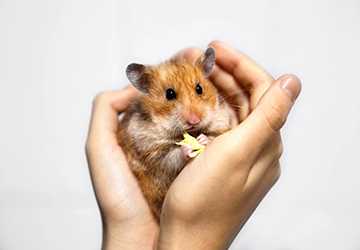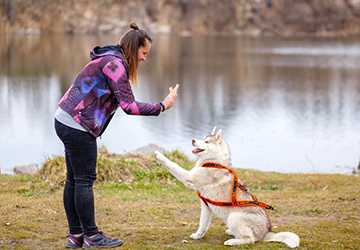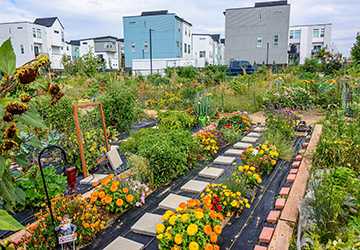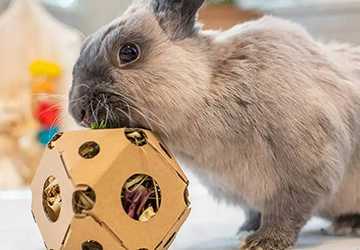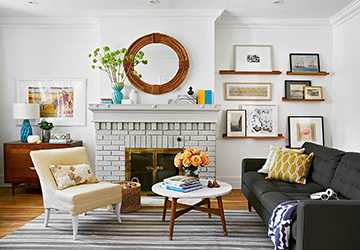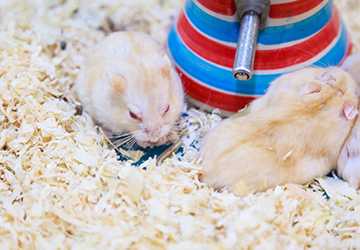Top 7 Essentials for Setting Up a Rodent Play Area
Hey rodent enthusiasts, listen up! If you've ever marvelled at the acrobatics of your furry friend or dreamt of creating a rodent wonderland, you're in for a treat. Setting up a rodent play area doesn't require a Ph.D. in rodentology; it's all about understanding the basics and adding a touch of creativity. This guide walks you through the top 7 essentials to turn your rodent's space into a haven of joy, excitement, and maybe a little mischief.
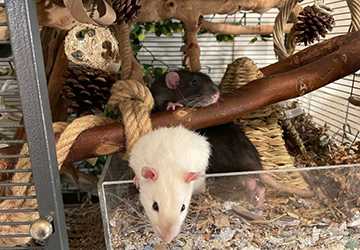
1. Safe and Secure Enclosure
The first step in setting up a rodent play area is ensuring a safe and secure enclosure; this is like the foundation of a sturdy house – without it, everything else may crumble. Opt for a well-ventilated enclosure with narrow bar spacing to prevent your tiny buddies from making a daring escape. If using a wire cage, ensure the bars are close enough to keep your little escape artists contained.
Additionally, check for any sharp edges or rough surfaces inside the enclosure. Rodents have delicate feet, and the last thing you want is for them to get injured during playtime. Cover your play area with platforms or ramps with a soft material like fleece to give your pets a comfortable, non-slip surface.
2. Enrichment Toys and Activities
Imagine a play area without toys – not very exciting, right? Rodents, like hamsters, mice, and rats, are intelligent creatures that thrive on mental stimulation. Introduce a variety of toys and activities to keep them engaged and prevent boredom.
Consider items like exercise wheels, tunnels, and climbing structures. Hamsters, in particular, love to burrow, so providing bedding material or tunnels for them to explore will mimic their instincts. Rats enjoy climbing, so a multi-level play area with ropes or ladders will cater to their adventurous spirit.
Remember to rotate toys regularly to keep things fresh; this maintains your pets' interest and prevents them from getting bored with the same old setup. Remember that some rodents may have preferences, so observe their behaviour to determine what they enjoy the most.
3. Proper Flooring and Bedding
Just as you wouldn't want to walk on a hard, uncomfortable surface, your little rodents deserve cosy and appropriate flooring in their play area. Opt for a soft bedding material that provides a comfortable surface for them to walk, run, and play on. Avoid pine or cedar shavings, which can harm your pets' respiratory systems.
Paper-based bedding or aspen shavings are excellent alternatives that are safe and comfortable. Ensure the bedding is deep enough for burrowing and digging, allowing your pets to engage in their natural behaviours.
In addition to comfortable flooring, include a litter box in the play area. Rodents can be surprisingly tidy, and having a designated bathroom area will make cleaning up a breeze. Use a dust-free and non-toxic litter material to keep your pets healthy and happy.
4. Hydration and Nutrition Stations
A play area can work up quite an appetite, so it's crucial to include hydration and nutrition stations. Place a water bottle or dish in an easily accessible location within the enclosure to keep your pets well-hydrated. Check the water supply regularly to ensure it's clean and free from any blockages.
Regarding nutrition, scatter food puzzles or hide treats around the play area to encourage foraging behaviour; this provides mental stimulation and adds excitement to mealtime. Consider placing a small bowl of fresh vegetables or fruits to supplement their diet with essential vitamins and minerals.
Keep in mind the dietary preferences of your specific rodent species. Some prefer seeds and grains, while others enjoy fresh fruits and veggies. Consult with your veterinarian to ensure you offer a well-balanced and species-appropriate diet.
5. Cozy Hideouts and Nesting Areas
Imagine having a play area without a cosy corner to retreat to when it's time to recharge. Rodents, being naturally burrowers, appreciate having nesting hideouts and regions where they can feel safe and secure. Provide small shelters or igloos made from safe materials like plastic or wood, ensuring no sharp edges. These hideouts are retreats for your pets to rest, relax, and engage in their natural nesting behaviours.
Consider incorporating nesting material like shredded paper or plain, non-toxic tissues inside these hideouts; this allows rodents to create comfy nests, fostering a sense of security. Pay attention to your pets' preferences – some may enjoy building elaborate nests, while others prefer a more straightforward setup. Providing options ensures that each rodent can create a space that suits their needs.
6. Environmental Stimuli
A well-designed rodent play area goes beyond physical structures; it should stimulate your pets mentally. Introduce environmental stimuli to engage their senses and encourage exploration. Hanging toys from the enclosure's roof, such as wooden chews or small bells, provides visual and auditory stimulation. These additions capture your pets' attention and encourage physical activity as they reach and climb to interact with the stimuli.
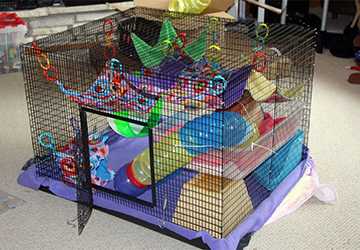
Consider placing the play area with natural light, allowing your rodents to experience day and night cycles; this helps regulate their circadian rhythms, promoting a healthy sleep-wake cycle. Natural light exposure is essential for their well-being, influencing mood and activity levels.
To further enrich their environment, incorporate a variety of textures. Include cardboard boxes, soft blankets, and even smooth stones for your pets to explore. Different textures engage their tactile senses, making playtime more exciting and enjoyable. Just ensure that any materials used are safe for your rodents to interact with.
7. Interactive Bonding Time
While the physical environment is crucial, pay attention to the importance of spending quality time with your pets. Interact with them regularly to strengthen your bond and create a positive association with the play area. Allow your rodents to explore outside the enclosure under supervised conditions, providing a safe and controlled environment for them to roam.
During bonding sessions, consider introducing hand-fed treats or gentle petting to create positive associations with human interaction. Sitting near the play area and talking to your pets soothingly helps them become familiar with your presence. Gradually increase the duration of these interactions to build trust and rapport.
If you have multiple rodents, ensure that the play area is spacious enough to accommodate all of them comfortably. Keep an eye on their interactions to ensure harmony among the group. Bonding time enhances your relationship with your pets and contributes to their overall mental well-being.
Conclusion
So there you have it, fellow rodent enthusiasts – the top 7 essentials for setting up a rodent play area that will have your furry friend doing cartwheels of joy (metaphorically, of course). From the perfect enclosure to engaging toys, nutritious snack stations, and the extra flair of environmental enrichment, your rodent's playtime is about to go from mundane to magnificent.
Remember, it's not about the glitz and glam but about creating a space where your rodents can be themselves – curious, playful, and utterly content. So, roll up your sleeves, gather those toys, and prepare for a rodent adventure that'll make your little friend squeak with delight. Happy playing!

